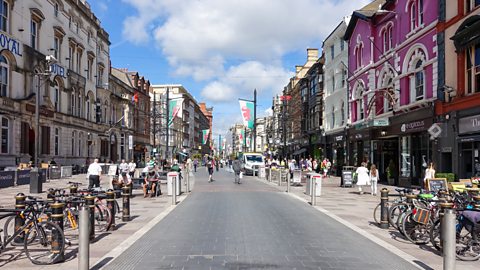How is the high street fighting back?
No urban area has seen as much change as the high street. Traditionally the location of all major retail activities, the high street has undergone rapid change over the last 20 years. The threat from out-of-town retail parks and the internet has forced many traders out of business.
This has led to a negative multiplier effect in which premises have become derelict and an eyesore, which attracts criminal activity. Other businesses are therefore not keen to remain, they too close and before long the high street becomes unattractive both aesthetically and as a place to trade. However, town planners and business owners are desperately trying to find ways to prevent this happening.
In Cardiff, the redevelopment of St Mary Street, a once thriving high street, is an example of how an area can become a popular place for retail once more.
St Mary Street, Cardiff
In the late 1990s St Mary Street, Cardiff, had a reputation as a busy, crowded, polluted high street with some businesses vacant for months on end. However, the city’s planners have now improved the area significantly in order to reduce the pollution and improve security and retail opportunities.

A variety of strategies and improvements have been used in St Mary Street and the surrounding area to win back consumers.
- The street has been pedestrianised, restricting vehicles and cars. Bollards clearly mark the roadway and provide further safety for pedestrians.
- New and improved CCTV has been installed. This makes people feel safer and allows authorities to monitor criminal activity.
- al fresco Being outside, in the open air. dining has been implemented, allowing businesses to place seating outside the premises.
- New bus stops with live information digital screens allow people to plan journeys.
- New paving and street furniture such as benches have been created. This gives the environment a cleaner look.
- New signage and wayfinding information has been erected to help people navigate their way.